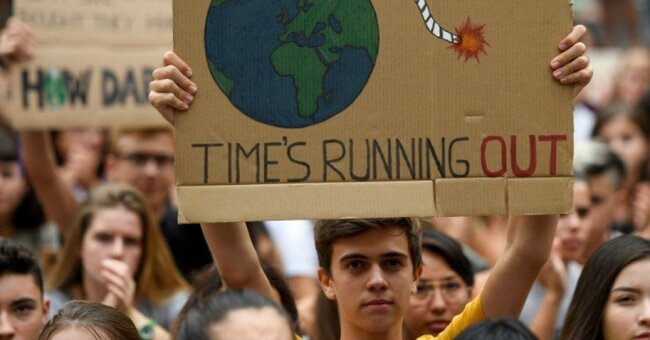Point of view
Written by Abel Vale | Josefina Arce as co-author
Photo by Josep Lago (AFP)
Natural laws are the same throughout the universe. The planet Venus initially had similar characteristics to the planet Earth, both in its atmospheric composition and its water content. However, it lost all its oceans and today its atmosphere, composed mostly of carbon dioxide, makes it impossible for life to exist, at least as we know it on Earth, due to its high temperature.
The geologic past has left a record of climate in rocks, which indicate that the temperature of the planet has ranged on average between -2 and +2 degrees C throughout geologic time and life has been found to be feasible within that range. This average temperature is what sustains different cycles, such as the water cycle that allows life to exist. When plants arrived, they began to use carbon dioxide to convert it into food and other materials through photosynthesis. Over time, plants, algae, bacteria and other organisms with skeletons died and decomposed over the centuries to become coal, oil, natural gas and limestone, among others. This and other processes lowered the concentration of carbon dioxide in the atmosphere, thus maintaining temperatures suitable for life.
But about 200 years ago, the human species, through the industrial revolution using fossil fuels as a source of energy, propelled mechanized industry and agriculture to boost human population growth from about one billion people to 7.7 billion at the moment. Fossil fuels to this day are the major source of energy to support transportation, agriculture, and all the infrastructure that human activity has created. Excessive consumption of fossil fuels has returned to the atmosphere carbon dioxide that has been sequestered beneath the earth for millions of years. The use of these fuels and deforestation are major contributors to the increase of carbon dioxide in the atmosphere. Carbon dioxide content has increased from 280 ppm about 200 years ago to more than 400 ppm at present, which has enhanced global warming. If it continues this way, it may reach an average temperature that cannot sustain life.
Sea levels are rising, glaciers are disappearing, the Arctic is in the process of becoming ice-free and Antarctica, which contains the largest volume of ice on the planet, is in an accelerated process of melting. Sea levels are rising, glaciers are disappearing, the Arctic is in the process of becoming ice-free and Antarctica, which contains the largest volume of ice on the planet, is in an accelerated process of melting. If anyone has any doubts about global warming, read the latest news on the latest temperature records with record heat above 100 degrees Fahrenheit in Eastern Siberia.This has the aggravating factor of melting the permafrost, which has trapped large quantities of methane gas that, when released into the atmosphere, contributes dramatically to the global warming effect since methane retains much more heat than carbon dioxide. It is time for us to realize that what is at stake is all of life itself. If we do nothing, we will probably end up like Venus. The future has to be today, otherwise there will be no future.


Leave a Reply